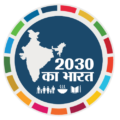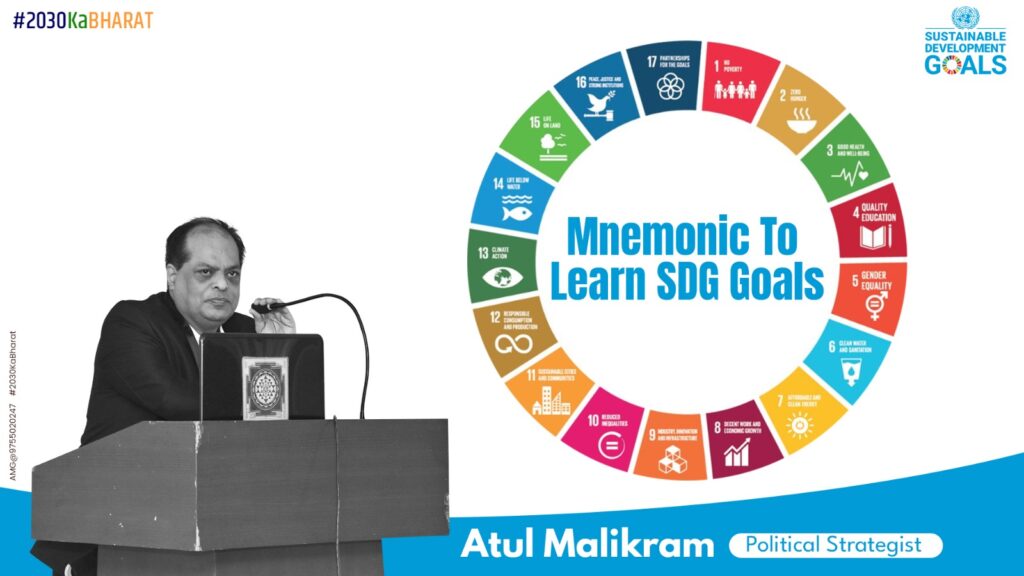Sustainable Development Goals (SDGs) are a universal call to action to end poverty, protect the planet, and ensure prosperity for all by 2030. These 17 goals, adopted by all United Nations Member States in 2015 as part of the 2030 Agenda for Sustainable Development, represent a comprehensive framework for addressing global challenges. Mnemonic To Learn SDG Goals.
But have you ever thought that how can we remember all these goals easily?
Certainly, to remember the Sustainable Development Goals (SDGs) more easily, you can use various mnemonic techniques, acronyms, or visual aids. Here’s one common approach using an acronym:

Understanding and remembering these goals can be a daunting task, but we have a mnemonic to make it easier: “PEACE AND JUSTICE FOR ALL GOOD PARTNERSHIPS.”
1. P – Poverty Eradication (No Poverty)
The first SDG goal, “No Poverty,” is about eliminating extreme poverty by ensuring that everyone has access to basic necessities like food, clean water, and sanitation. It’s a crucial step towards a more just and equal world.
2. E – End Hunger (Zero Hunger)
Goal 2, “Zero Hunger,” aims to ensure food security, improve nutrition, and promote sustainable agriculture. This means no one should go to bed hungry, and we must reduce food waste and support small-scale farmers.
3. A – All Good Health (Good Health and Well-being)
“Good Health and Well-being“ (Goal 3) focuses on promoting healthy lives for all, at all ages. This encompasses maternal and child health, disease prevention, and access to quality healthcare services.
4. C – Clean Water and Sanitation (Clean Water and Sanitation)
Goal 4, “Clean Water and Sanitation,” is about ensuring access to safe and clean drinking water and adequate sanitation facilities. It’s fundamental for reducing disease and improving living conditions.
5. E – Education for All (Quality Education)
“Quality Education” (Goal 5) seeks to provide inclusive and equitable education for all. This means not only access to education but also improving the quality of education and promoting lifelong learning opportunities.
6. A – Affordable and Clean Energy (Affordable and Clean Energy)
Goal 6, “Affordable and Clean Energy,” focuses on access to reliable, sustainable, and modern energy for all. This includes transitioning to renewable energy sources.
7. N – No Climate Change (Climate Action)
“Climate Action” (Goal 7) addresses the urgent need to combat climate change and its impacts. This includes adopting renewable energy, increasing energy efficiency, and raising awareness about climate change.
8. D – Decent Work and Economic Growth (Decent Work and Economic Growth)
Goal 8, “Decent Work and Economic Growth,” is about promoting sustained, inclusive, and sustainable economic growth. It involves creating job opportunities, supporting small businesses, and ensuring fair wages.
9. J – Justice and Strong Institutions (Reduced Inequality)
“Reduced Inequality” (Goal 9) focuses on reducing inequality within and among countries. This involves policies that address income disparities, promote inclusion, and reduce discrimination.
10. F – Financial Inclusion (Industry, Innovation, and Infrastructure)
Goal 10, “Industry, Innovation, and Infrastructure,” emphasizes the need for resilient infrastructure and the promotion of inclusive and sustainable industrialization.
11. O – Open Innovation and Infrastructure (Sustainable Cities and Communities)
“Sustainable Cities and Communities” (Goal 11) seeks to create inclusive, safe, resilient, and sustainable cities and human settlements. This involves urban planning, affordable housing, and improved transportation.
12. R – Responsible Consumption and Production (Responsible Consumption and Production)
“Responsible Consumption and Production” (Goal 12) aims to ensure sustainable consumption and production patterns. This means reducing waste, using resources efficiently, and promoting sustainable practices.
13. A – Action on Climate (Climate Action)
“Climate Action” (Goal 13) emphasizes the importance of taking immediate action to combat climate change. This includes raising awareness, implementing policies, and transitioning to renewable energy.
14. L – Life Below Water (Life Below Water)
Goal 14, “Life Below Water,” is about conserving and sustainably using marine resources. This includes protecting marine ecosystems and preventing marine pollution.
15. L – Life on Land (Life on Land)
“Life on Land” (Goal 15) focuses on protecting, restoring, and promoting sustainable use of terrestrial ecosystems. This means combating desertification, halting biodiversity loss, and restoring degraded lands.
16. G – Good Partnerships (Peace, Justice, and Strong Institutions)
“Peace, Justice, and Strong Institutions” (Goal 16) emphasizes the importance of building peaceful, just, and inclusive societies. It includes access to justice and accountable institutions.
17. S – Sustainability for All (Partnerships for the Goals)
Finally, “Partnerships for the Goals” (Goal 17) calls for collaboration among governments, businesses, and civil society to achieve the SDGs. This involves sharing knowledge, resources, and expertise.
These methods can make it easier to remember and promote the SDGs in your work.
Learning and remembering the 17 SDG goals is essential for actively contributing to a more sustainable and equitable world. The Mnemonic To Learn SDG Goals can help you easily recall and understand these goals. By familiarizing yourself with these objectives, you can play a role in achieving the 2030 Agenda for Sustainable Development and making the world a better place for all.

